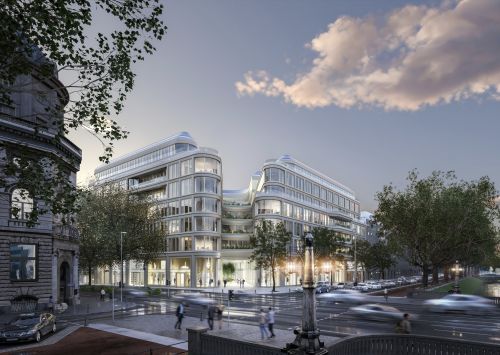No discounts
Investment & finance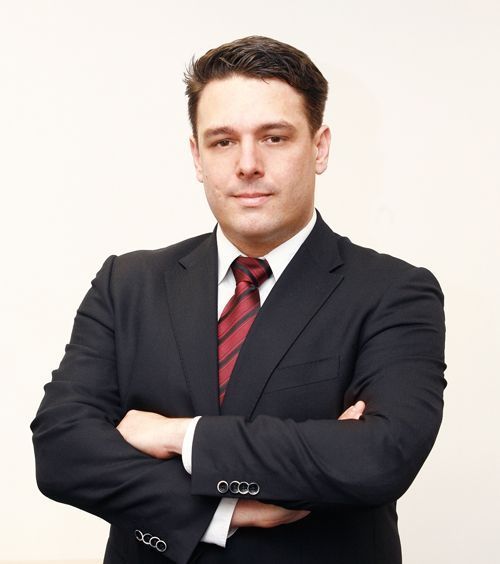
Between 2010 and 2015 transactions involving retail parks in Polish towns of up to 100,000 inhabitants were worth EUR 82 mln. According to Colliers International, 14 retail parks with a total area of 85,000 sqm changed hands. Four transactions were for portfolios with the largest of them being the acquisition of three Elbfonds retail parks by the German Marcredo fund for EUR 32 mln in 2014. The yields ranged from 8.5 to 10 pct and the average price per sqm was EUR 1,100. The European market in 2017 was dominated by a EUR 900 mln transaction when Pradera took over 25 Ikea retail parks in eight countries, including four in Poland and one in the Czech Republic. A combined total of around 150,000 sqm of retail parks were sold in Poland in 2017 for around EUR 230 mln. The Ikea portfolio sale turned out to be the largest of the year. This year too, more than a dozen sales transactions of individual retail parks are expected. For example Eden retail park in Zgorzelec and Wawer retail park in Warsaw were sold in Q1,” summarises Katarzyna Michnikowska, a director in the advisory and market research department at Colliers International. “Now in 2018 we have reached more than EUR 700 mln cumulatively of transacted retail parks across Poland since 2005 and we expect to exceed EUR 800 mln by the end of 2018. We are seeing a growing number of transactions, while the average investment volume per retail park is decreasing. The average size of retail parks transacted came to EUR 5.23m in 2017 in comparison to EUR 9.2 mln two years earlier,” claims, Bartłomiej Krzyzak, an associate director at Apleona GVA.
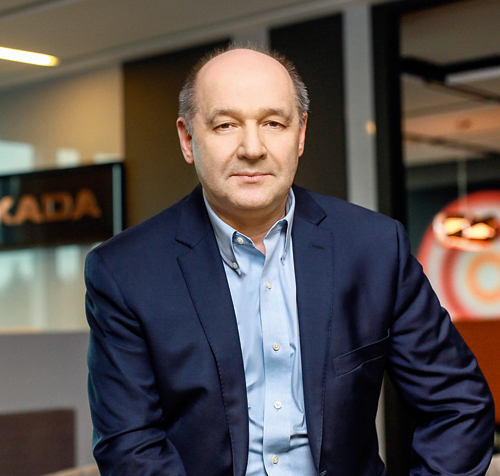 “In my opinion smaller centres might be
“In my opinion smaller centres might be driven off the market due to their limited
selection for everyday purchases,”
says Aleksander Walczak, the CEO of
the Dekada chain
This year a contract was also signed for the sale of four operating retail parks and one under development to CPI Property Group by Katharsis Development. The four centres in the portfolio that was sold are in Radom (opened in 2013), on ul. Sadowa in Zamość (opened in 2015), on ul. Hrubieszowska in Zamość (opened in 2016) and in Rembertów (opened in 2017). The incompleted development project that was also sold is in Siedlce and is already 90 pct leased. Eventually the portfolio will have a leasable area of 19,000 sqm gla. Katharsis and CPI have unfortunately signed a non disclosure agreement and will not betray how much the Hop Stop portfolio was sold for (not even to Eurobuild). CPI has not yet stopped spending. “Currently we have six retail parks and we’re in the process of acquiring another two,” says András Marton CPI’s country manager for Poland. But CPI’s plans don’t stop there: “We recently had a large issuance programme so we have capital to Invest. There are a lot of opportunities in Poland. On the retail market we are focussing both on retail parks and on large scale shopping centres. The fact that we can go to small secondary tertiary cities and for projects of EUR 5 mln to EUR 100 mln plus truly gives us a lot of opportunities. We do expect to expand rapidly in Poland,” he explains.
Master Management Group is also on a spending spree and in negotiations for three centres. “When you have a lot of space tenants see you as a partner rather than as a holder of one or two properties. So I believe you have to become larger for the tenants to respect you and treat you as a partner,” claims Paul Kuśmierz the CEO of Master Management.
Business is booming
Although retail parks were originally developed in suburban locations, today they are often referred to as convenience shopping centres and can be found in city centres or at transport hubs such as bus or railway stations. Only a few years ago retail parks had been established in Poland mainly in large cities but now these centres are also being created even in towns of up to 15,000 inhabitants. Many of those we talked to stated that the market is already quite saturated with retail parks and there are fewer and fewer places that are suitable for building such centres. “We have eleven parks in operation plus three in the pipeline, which makes up a total of 14 Dekada centres. We believe that our chain needs to be developed further. We would like to have at least 20 centres. Due to the saturation on the market, it is now difficult to acquire a suitable plot and start a new project. So we’ve started thinking about taking over buildings from other players. We want to buy projects that are of the same type as Dekada. We are interested in buildings with at least twelve or more tenants. In my opinion smaller centres might be driven off the market due to their limited selection for everyday purchases,” says Aleksander Walczak, the CEO of the Dekada chain. This sentiment is repeated by Paul Kuśmierz of Master Management Group: “I think there’s going to be consolidation on the market, because in three or four years, you won’t be able to build too much more.”
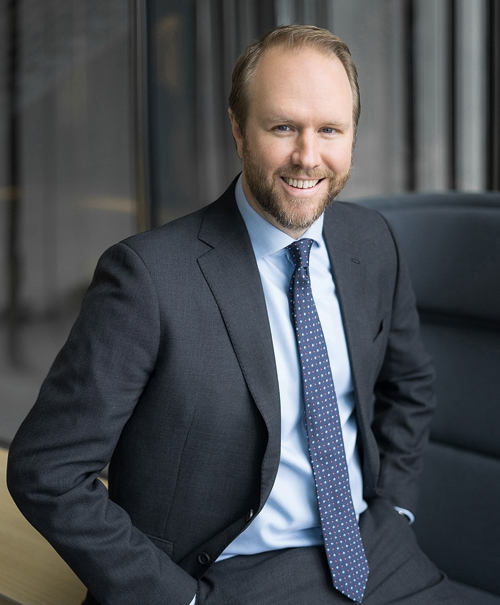 “We don’t believe that branding is
“We don’t believe that branding isparticularly important for local customers
but it’s certainly helpful for us when in
discussions with our tenants,” remarks
Rory Mepham the managing director of
Newbridge
But these are not the only factors that are driving the retail market in Poland especially in the regions. Under the government’s 500+programme, which began in April 2016, every family with over two children receives PLN 500 per month as well as a further PLN 500 for each subsequent child.“We do believe that the PLN 500 programme was a very good start. Now with retail spending increasing we expect that salary increases will follow. I would say that in the big cities the PLN 500 is not that material, but in the countryside, and especially where we are looking at these retail parks, this is a significant income boost,” claims CPI’s András Marton.
Furthermore, some investors point out that this segment of the retail market is resistant to the changing consumer habits, especially the development of e-commerce. “We think that this type of property is well positioned to defend against the long term threat of e-commerce. Low rents, low service charges, easy to access, good parking and convenient locations are all factors which we believe contribute to their defensive nature,” says Rory Mepham, the managing director of Newbridge.
CPI has a similar opinion. The company believes it is the medium sized-shopping centres that are to be hit hardest by the coming e-commerce revolution. “Consumers want to shop in large dominant centres or they want to shop nearby, close to their apartment housing. The middle-ground will decline or is already declining. We think that smaller shopping centres, especially those away from residential areas, will be heavily hit by e-commerce and changing consumer spending patterns,” claims András Marton, the country manager for Poland at CPI Property Group.
One paradoxical advantage of retail parks is their location as many have now been established in smaller towns (with app. 15,000 sqm inhabitants in the case of Vendo Parks). “It is hard to imagine that there could be another retail park in such a small town, so most often we are the only player on the local market,” notes Jacek Wesołowski, the CEO of Trei Real Estate Polska, which operates a chain of retail parks under the Vendo Park brand.
Who, where and how much for
Despite the dominance of foreign funds on the market according to Apleona GVA, Polish players are becoming increasingly more active on the market. “We are seeing a few more Polish investors on the market, looking for this type of product – retail parks,” claims Michał Ćwikliński, the managing partner of Apleona GVA in Poland.
However, many on the market are of the opinion that retail parks are expensive. “We receive a lot of sales proposals, but no transactions have taken place yet as they are usually priced for investment funds and we are not such a fund. We are interested in bargains so that we can later raise the value of the centres by rebuilding, extending or changing the tenants. We are looking for projects that will enable us to further develop them at a price ranging from around ten million to many tens of millions,” says Alexander Walczak. Newbridge is also counts on such opportunities, although it wants to eventually hold a portfolio of retail parks worth around EUR 100 mln. “We are by nature an opportunistic investor and so we will invest wherever we perceive entry pricing to be attractive and there is the potential to add value. We are currently focused in the retail park and convenience shopping mall sector but will consider other asset classes in time,” says Rory Mepham. “I am currently a net buyer and so of course I would say that they are expensive,” he adds.
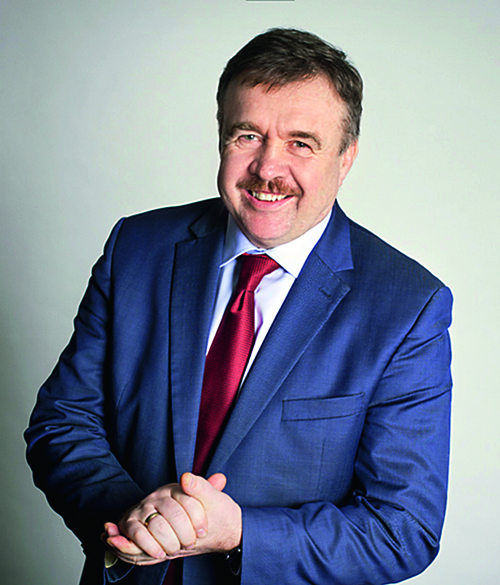 “Today, the market price has reached
“Today, the market price has reachedthe real value of these facilities,”
comments Jacek Wesołowski, the CEO
of Trei Real Estate Polska
But not everyone on the market thinks so. “I would look at it from a different angle – so far retail parks have been undervalued for a long period of time. In the past, transactions were finalised with yields of 10 pct. It was unnaturally cheap while city centre malls sold with yields of around 5 pct. The market was at a nascent stage. Nobody had a solid portfolio at that time and it was difficult to get investors to buy. Nowadays, yields are approaching 7 pct and for me that is about the right level to sell. Today, the market price matches the real value of these centres,” claims the CEO of Trei Real Estate Polska. The company currently has seven Vendo Park retail parks although it wants eventually to own 40-50, but it is not intending to grow through acquisitions. “Today we’re not thinking about taking over other retail park chains in Poland, although we won’t exclude such a move in the future. We’re looking to increase the size of the chain so that we can begin to take part in a different market than the one we have today. Today it is the smaller funds that are investing because of the size of what’s on sale. We want to be talking with the larger funds, which is why we need to strengthen our chain through new openings,” adds Jacek Wesołowski.
The funds themselves, according to Apleona GVA, are often not that interested at what is currently on the market. Institutional funds are looking to buy portfolios of which there are relatively few. “For some investors single transactions are not interesting because you do not get the volume and you spend too much time on them,” claims Michał Ćwikliński. When asked if we should be expecting other large portfolio deals to come onto the market soon he answered “possibly yes, but it’s difficult to develop such a portfolio. Most developers focus on developing and then sell them one by one.” Despite the lack of willing sellers there is clearly pent up demand. ApleonaGVA advised Katharsis Development on the sale of its HotSpot portfolio to CPI and according to Bartłomiej Krzyżak received dozens of offers for it.
What's next?
Investors often say that they buy retail parks to rebrand, rebuild, modernise or extend them. They often set up their own chains which are not yet present in Poland. CPI believes in following the same development policy it adopted in the Czech Republic and Slovakia. “We want to implement our own branding integrated into the portfolio, change the tenant mix to the concept that we have proven to work. We want to have a more or less uniform retail park business across the region,” states András Marton. Specifically the group wants to concentrate on larger tenants that meet convenience shopping needs. “We focus on 200-800 sqm tenants with very strong national or international backgrounds,” he explains and adds that retail parks are a solid investment under efficient management. In the Czech Republic and Slovakia we have introduced the brand City Market and this is what we’ll be rebranding the parks in Poland to,” emphasizes the head of CPI in Poland.
Newbridge is also has a similar strategy. “Our assets are in the process of being rebranded under the Newbridge brand. We don’t believe that branding is particularly important for local customers but it’s certainly helpful for us when in discussions with our tenants,” remarks Rory Mepham.
Despite retail parks having generated little interest thus far, there are good reasons for investors to buy them. “The convenience character of a retail park is a major advantage when looking at the effect of e-commerce on the retail market. The growing interest of “Click and collect” or same day delivery may be achievable due to the dense network of stores available in retails parks. A good example is the growing chain of IKEA’s e-stores in retail parks across Poland”, claims Bartłomiej Krzyżak.












































